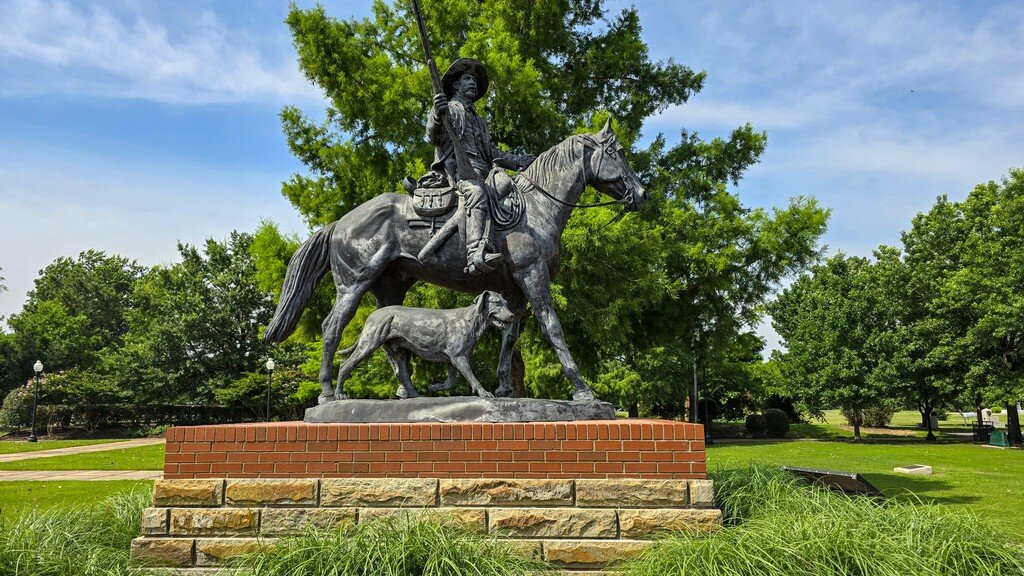
Fort Smith, AR
Fort Smith, Arkansas, has a fascinating history as a frontier military post, a gateway during Indian removal, and later as the seat of federal law on the edge of the “Wild West.” Fort Smith truly is where America’s frontier, wartime upheaval, federal law enforcement, and Native American history converge.
Today, Fort Smith is a cool blend of small-city charm and growing vibrancy. With about 90,500 people (a slight increase since 2020) it’s the third-largest city in Arkansas and anchors a metro area of nearly 300,000 across Arkansas and Oklahoma. Fort Smith feels lively—rooted in its frontier history, with a growing arts and food scene, solid economy, friendly neighborhoods, and a nice base for both families and young professionals. It’s a spot where history and opportunity sit side by side.
Fort Smith
It all started in 1817, when the U.S. Army, led by Major William Bradford and engineer Stephen Long, built the first Fort Smith atop Belle Point to maintain peace between the Osage and a migrating band of Cherokee. This small stockade featured blockhouses, a hospital, and provision buildings. Remarkably, its only threat came in 1821 from Chief “Bad Tempered Buffalo” and the Osage, who backed down without bloodshed. By 1824, as tensions eased, the fort was abandoned in favor of one further upriver at Fort Gibson .
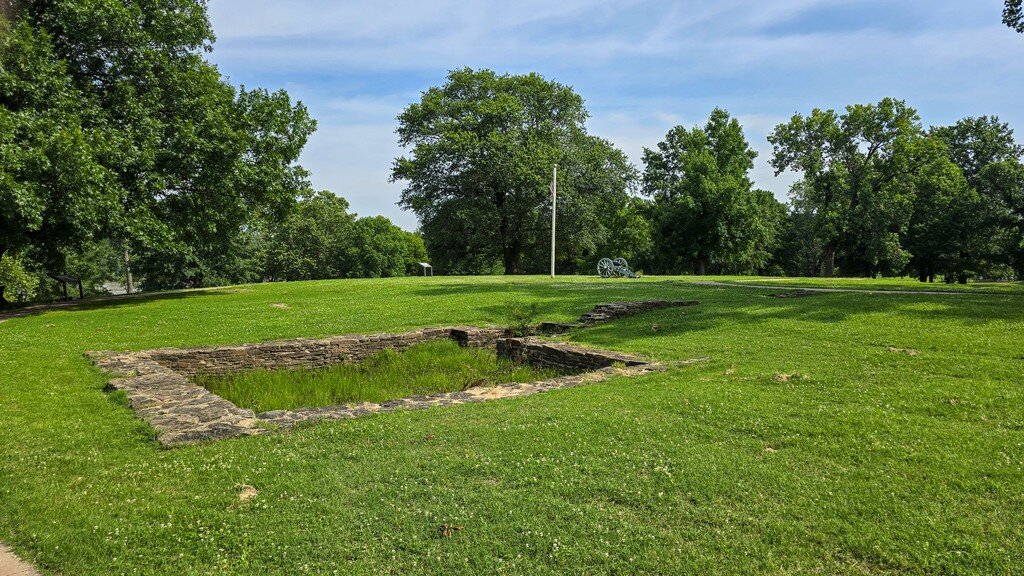
In 1838, the Army returned, erecting a new fort—later completed in 1846—as a supply depot during the era of Indian Removal. It played a significant role during the Trail of Tears, helping facilitate the forced migration of the Cherokee and other tribes westward. Under General Zachary Taylor in the 1840s, the site also became a supply base during the Mexican‑American War and served as a jumping‑off point for gold rush hopefuls.
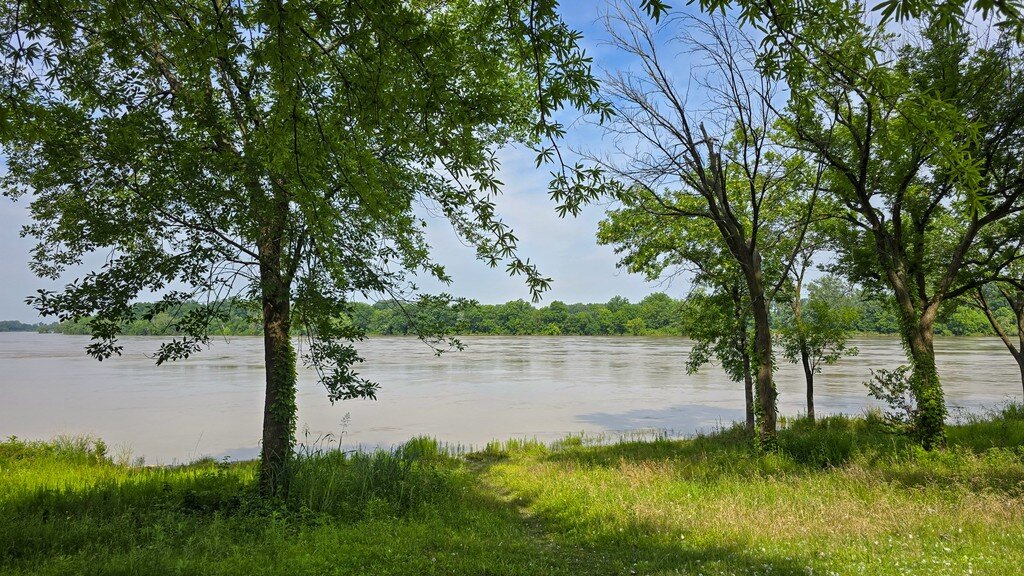
During the Civil War, Confederate forces occupied Fort Smith briefly in 1861, but Union troops seized it again in September 1863. It remained a Union stronghold until the war’s end, serving as a base for restoring order in the region.
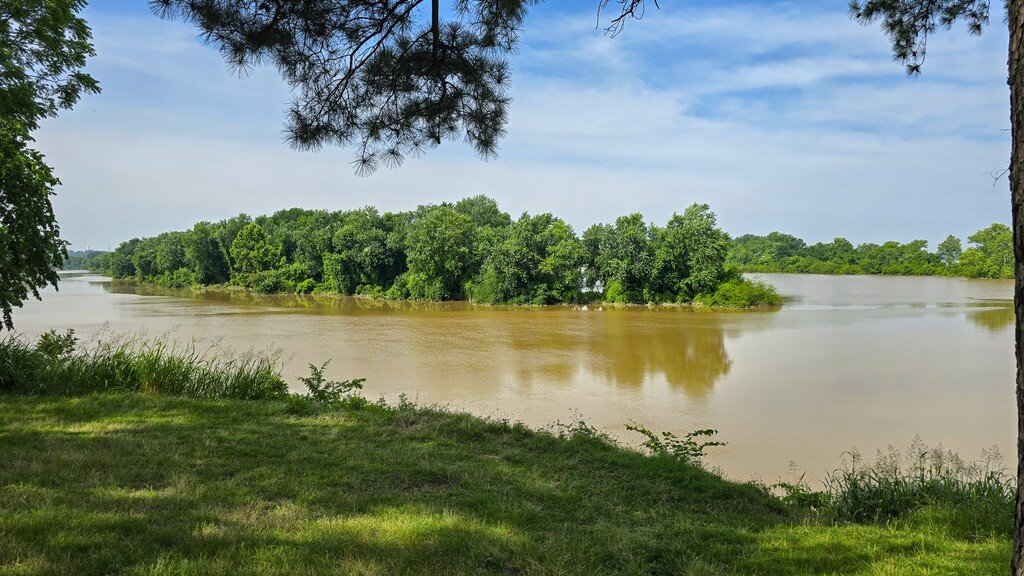
By 1871, the military presence ended, and in 1872, the site became the Federal District Court for the Western District of Arkansas, including Indian Territory. Judge Isaac C. Parker, the “Hanging Judge,” held court from 1875 to 1896. Over 79 people were executed under his watch—a record for a U.S. federal judge—while marshals, including the legendary Bass Reeves (Shown in the featured image at the top of this post with his dog), enforced the law across a notoriously lawless region.
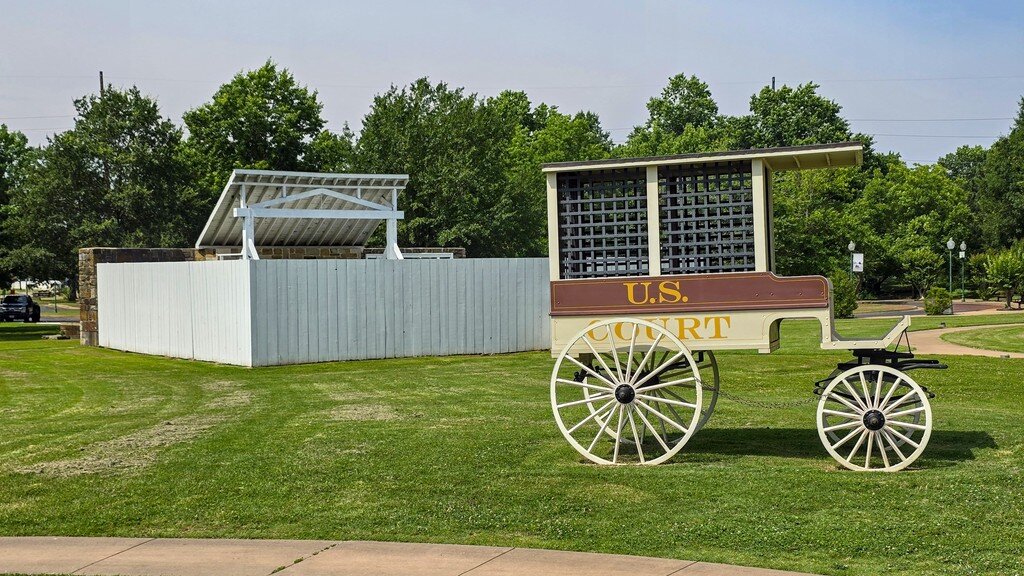

After Judge Parker’s death, the fort’s federal court and jail continued to operate until federal jurisdiction was scaled back in 1896.

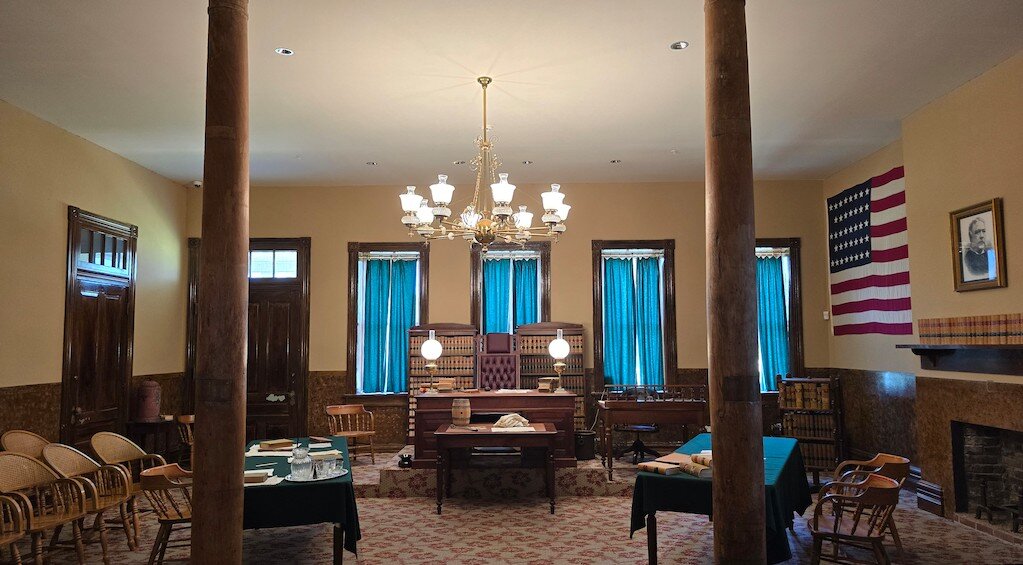
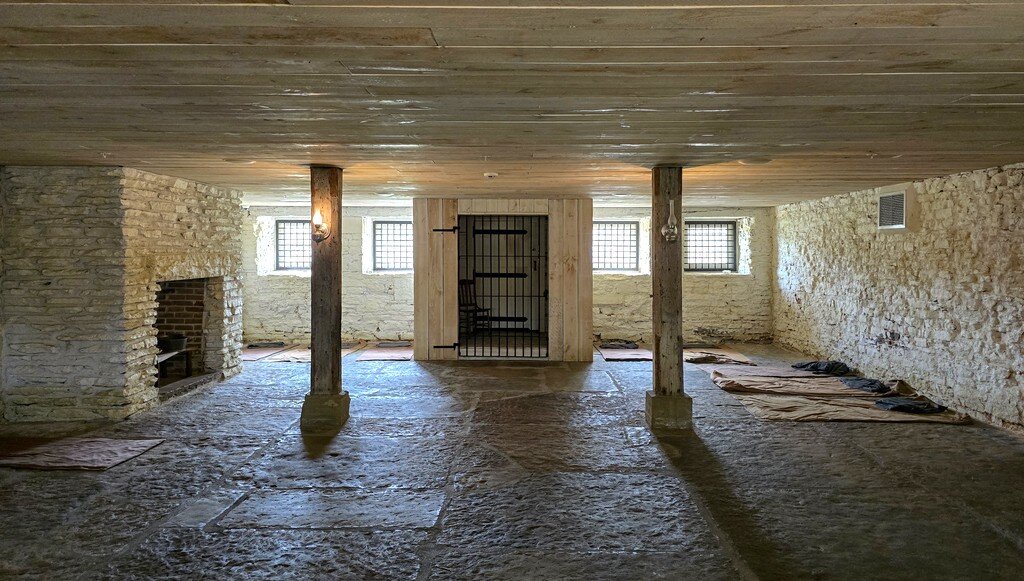

Fast forward to 1961, when the site was designated a National Historic Site and National Historic Landmark. Today, visitors can explore remnants of both forts, Judge Parker’s courthouse, reconstructed gallows, the oldest building—the Commissary from 1838—and the Trail of Tears overlook along the Arkansas River.

United States Marshals Museum
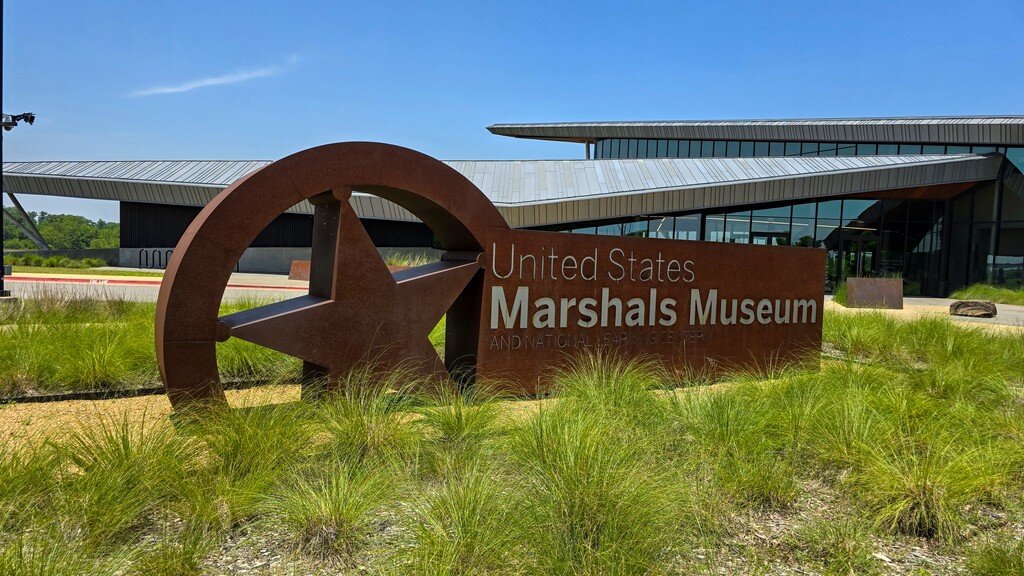
The U.S. Marshals Museum in Fort Smith, AR, is a fresh and immersive tribute to America’s oldest federal law enforcement agency. Built on the riverfront, this 53,000 sq ft facility officially opened to the public on July 1, 2023, after more than 16 years of planning and fundraising.
The museum is organized into five main galleries plus a Hall of Honor:
- To Be a Marshal – Traces the agency’s origins in 1789 and showcases its judicial and protective duties, with a timeline and interactive features.
- The Campfire – A centerpiece multimedia exhibit where animated marshal figures from different eras tell personal stories.
- Frontier Marshals – Focuses on Fort Smith’s frontier era with a recreated saloon, stories of figures like Bass Reeves and Judge Isaac Parker, and hands-on interactive scenes.
- A Changing Nation – Highlights marshals’ roles through Prohibition, the civil rights era, disaster response, and more, with participatory decision-making elements.
- Modern Marshals – Features current operations, including court protection, fugitive apprehension, and captures of FBI Most Wanted, showcased with multimedia and interactive displays.
- Samuel M. Sicard Hall of Honor – Pays tribute to over 350 fallen marshals since 1789, with names etched on a wall and a peaceful river view.
This museum isn’t just about local history — it brings the full 234-year story of the U.S. Marshals to life through interactive, emotional, and educational exhibitions. Whether you’re fascinated by the Old West frontier, modern law enforcement, or immersive museum design, the U.S. Marshals Museum delivers something compelling. If you’re planning a visit to Fort Smith’s rich historic district (next to the Old Fort and Judge Parker’s courthouse), this museum is a must-see highlight that connects past to present in a powerful, engaging way.
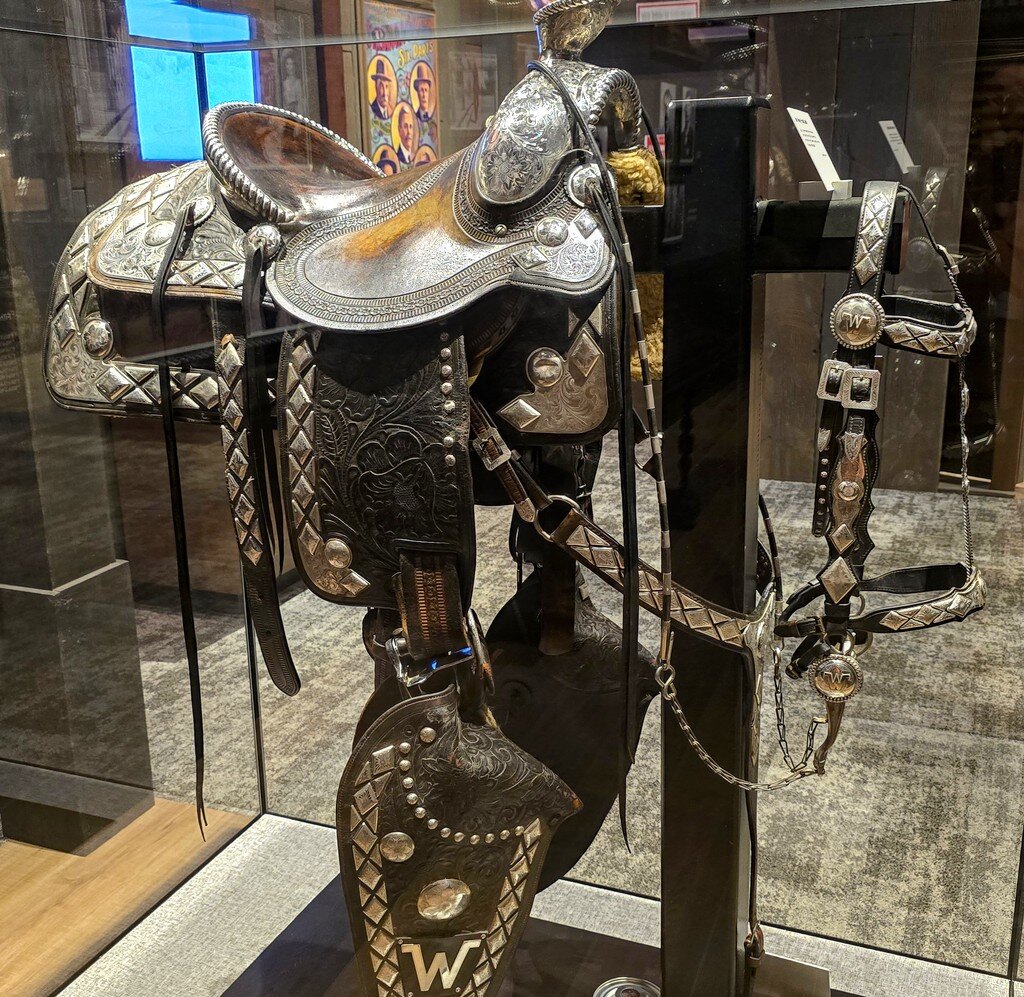
Actor John Wayne helped create the mythology of the frontier marshal through his many Western film performances during Hollywood’s Golden Age. Wayne rode this saddle in many parades.
Park Review – Fort Smith Riverfront RV Resort
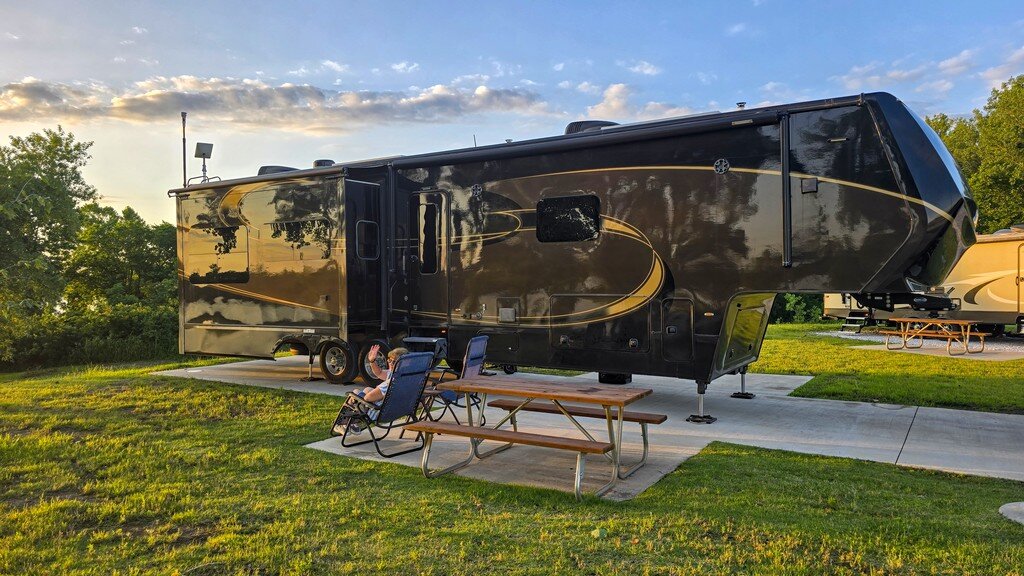

Rating: ⭐⭐⭐⭐
Location: Fort Smith, AR
Type: Commercial Park
Check-in/Check-out times: 1:00/11:00
Site Quality / Amenities: Roads were gravel and pads were concrete. We were in site 115 which was a premium 70′ site that backed up to the Arkansas River. These sites had a unique design with patios and connections on both sides of the pads. This allows for motor homes to pull straight in so that their large front windows face the river as well as supporting towables that back in to the sites. This is a new park and the few trees that were in the park were small. We were lucky in that there were some larger trees behind us that provided some shade later in the day. There are fire pits and picnic tables at each site. Park amenities include an Outdoor Playground & Exercise Area, Horseshoe Pits, Porch Swing Conversation Area with fire-ring, Pickle Ball Court, Private on-site Boat Ramp & Boat Parking Area, Boat Dock with Fish Cleaning Station, a Swimming Pool and a Dog Park. The entrance to the park is gated at night.
Access: Although you do have to go through town to get to the park it wasn’t difficult to navigate. Easily accessible from Interstate 40 from either direction.
Staff: Staff was friendly and helpful. We asked for and got a late check-out because of local heavy rain at checkout time and because we had a late check-in at our next stop and it wasn’t that far away.
Cellular/WiFi: They do have WiFi available but we didn’t use it. T-Mobile was good as was Starlink since we had an unobstructed view of the sky.
Restaurants: We tried Rolando’s Restaurante – a local Latin American place with good food. We typically like Mexican and Latin was a bit different for us but we still liked it.
Nearby parks: We didn’t check out any nearby parks.
What we liked: Concrete pads and large sites (premium). Convenient to local attractions including the fort, and Marshals Museum. Walking trail behind the park.
What we didn’t like: We felt like it was a bit expensive. The back side of the park was open to the public trail which could be a security issue although we didn’t experience any issues.
Verdict: We would stay here again!
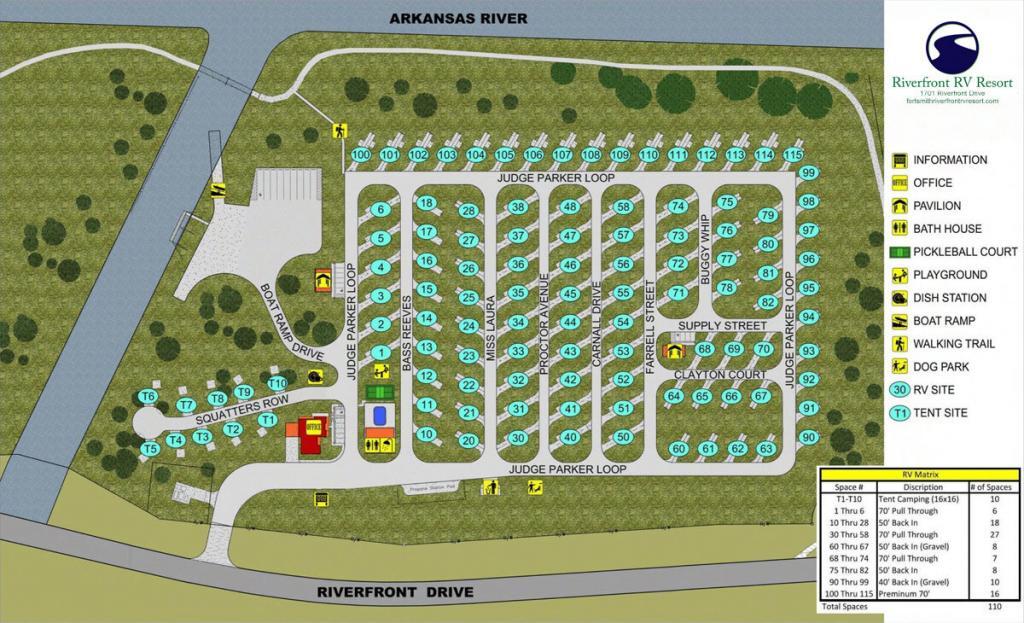
3 thoughts on “Fort Smith, AR”
Cool history – thanks for keeping us posted.
Welcome to Arkansas. Excellent blog post. Good to know about the new US Marshals Museum.
The Osage Indians have been called the Spartans of the tribes. Average height of a male was 6′. Warriors for sure. Controlled most of Missouri and Arkansas which was the first places the US pushed Indians from the east into before Oklahoma. Lots of fighting among tribes.
When you get to Mountain Home, check out the Wolf House over at Norfolk Arkansas which was also on the Trail of Tears. Couple nice places to eat in the small town; we like the brewery. https://www.arkansasheritage.com/arkansas-preservation/properties/jacob-wolf-house
A lot of history there in Arkansas! Pretty cool to see a John Wayne saddle! I always enjoyed watching the westerns with him in the show!